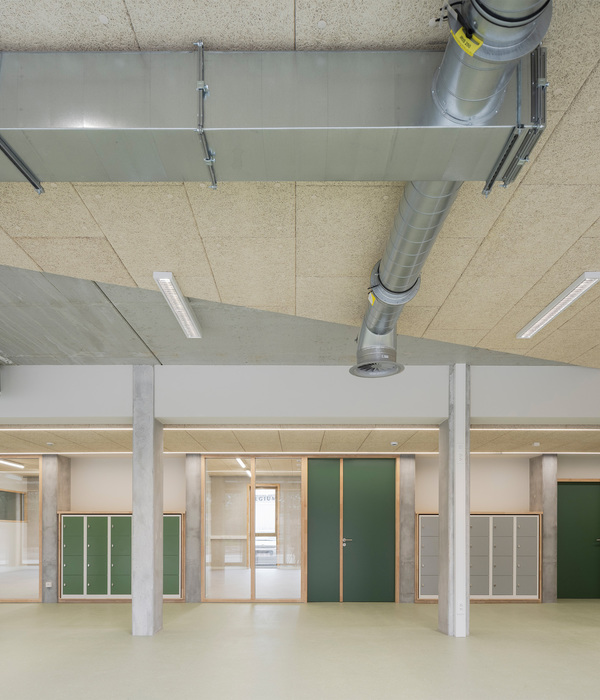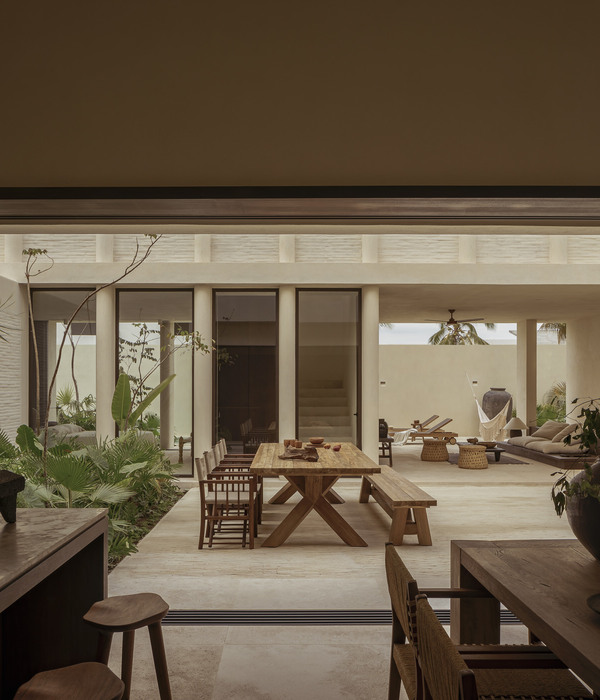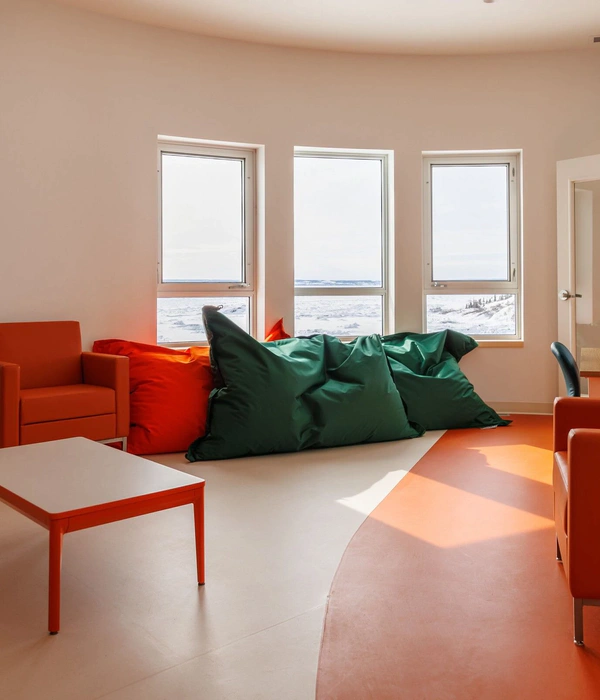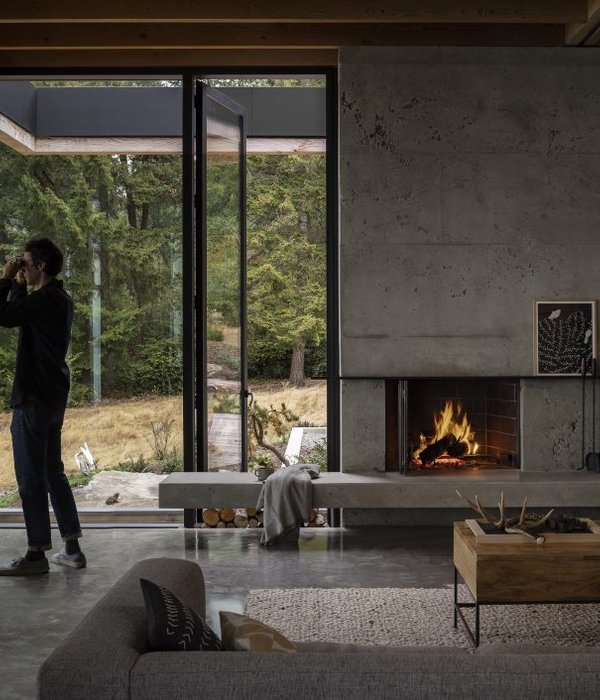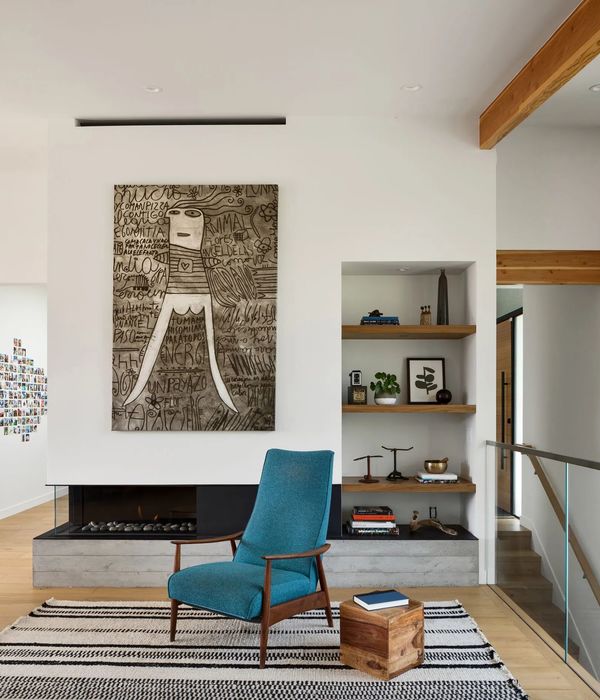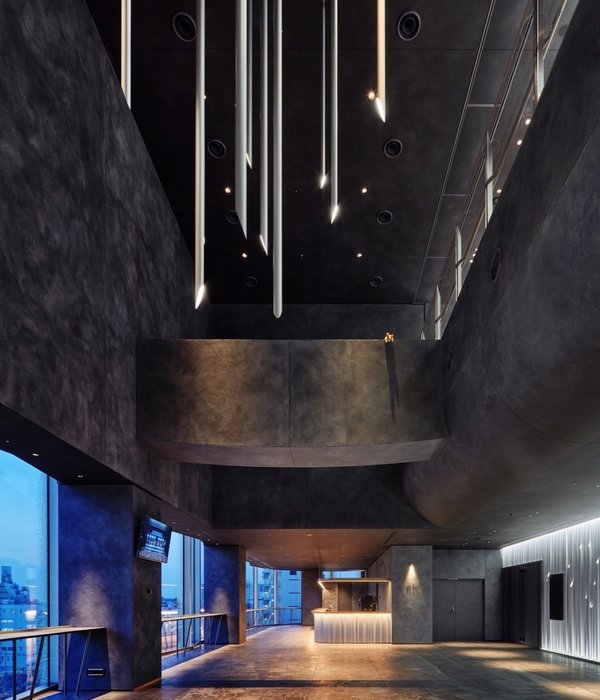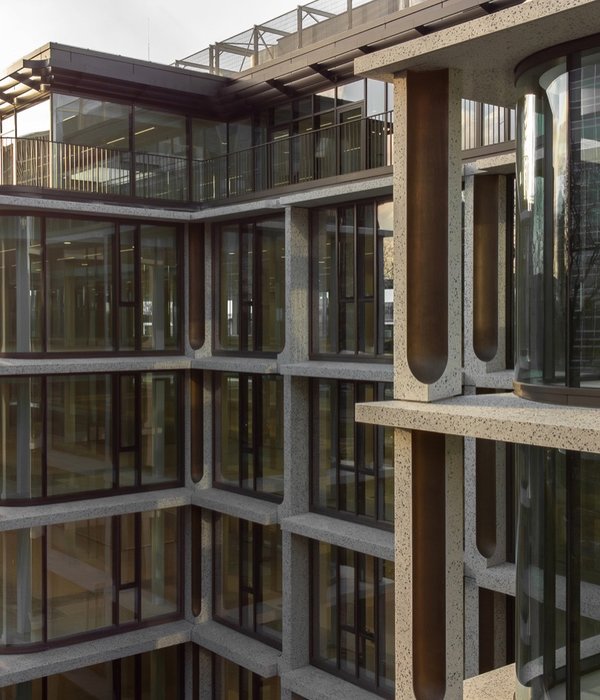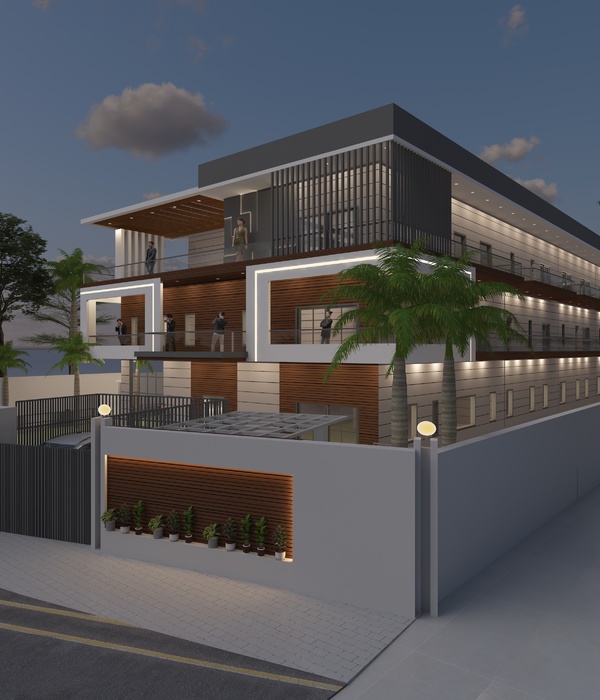The topography of the land, the material memory of the surrounding forts, the light of the forest, and the deep-water discharging ravines have created a dominant palimpsest of contextual parameters onto which the house has been woven. As a home for 4 generations, it behaves like a condensed village, allowing for private and communal life. The flow of the large load-bearing wall that traces the ridge between two ravines anchors the proposal and establishes itself as a “found” element, resonating the contours and material of the walls of the Tungi and Lohgad forts to the east and north of the site. As the site flows to Pawna lake, so too does the house, picking clearings within the trees to capture the views of the lake.
Formal planning strategies are incapable of absorbing the radical flow of the land and water and everything from the spatial quality to the material language echoes the spirit of the site. The wall ruptures at points where the Verandah bridges over the ravine and continues on into the forest to the second ravine beyond the ridge. Sleeping spaces are embedded in the forest while public spaces assume the mannerism of suspended flight to the north and east.
The roof follows the topography of the perch points, tracing the path laid down by the hill; its language of fletched rafters and weathering zinc a natural foil to the robustness of the locally quarried basalt. Its contours reference the horizon and the hill. The deconstructed language of the tree-like structures that support the roof liberates the edges where shaded spaces and the forest merge.
Float: Existing mountain streams have been mapped and preserved to retain the pattern of water discharge during the monsoon. Parts of the house are built on a ridge between 2 such streams to maximize their cooling potential and one of the major Verandah floats over the stream like a bridge. This also amplifies the flow of wind through the house. The public areas towards the north and east (desirable orientations in this region) are porous verandahs with deep roof overhangs providing protection from direct sun and rain, but allowing continuous movement of the breeze and landscape/ trees
Embed: Effective thermal banking: The private spaces are banked into the southern edge of the main ridge, overlooking the large ravine/monsoon stream. A large stone wall running from south to north along the ridge binds these spaces but breaks open to allow east-west breezes and landscapes to flow horizontally. The dense forest on the west shades these spaces, and the southwest corner rises above the land to shield the house from the afternoon sun. The placement of two bedrooms below the pool ensures natural cooling, while the orientation of the pool along the axis of the spine allows the breeze to be cooled before traveling through the house. The elevation of the pool also minimizes the likelihood of rats/ frogs/ snakes in the warm/ dry summer months.
{{item.text_origin}}

